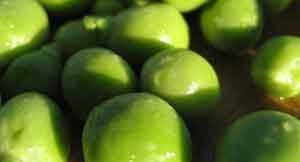What garden is complete without a plethora of peas? A great winter crop, peas add vertical interest to the vegie patch, and give a decent yield for the amount of space they consume. And besides, there is no greater pleasure than a handful of home grown peas eaten straight from the pod! Bliss! So go on, pop in some peas – you’ll be pleased you did!
Position, Position, Position!
Full sun, in frost-free conditions. Most peas are climbers so they need support as they can get up to about 2m high. However you can limit their height by nipping out the growing tip when they are as tall as your structure allows. A wire trellis, “tee pee”or similar can be used to prop them up. Plant no closer than 15cm to prevent young peas being over crowded and “fighting” each other.
Talking Dirty
Peas will thank you if you prepare their bed about five weeks before planting. Do this by adding loads of well-rotted chook poo and compost, and maintaining a pH of 6.5 – 7.5. A touch of dolomite lime in the patch at planting time is a good idea, one small handful around the area to be planted.
Feed Me!
A sprinkling of blood and bone a couple of times throughout the growing season, in addition to a drink of seaweed based fertiliser every three weeks is more than sufficient, especially if there is a pile of chook poo in the soil.
What about the Water?
Overwatering, especially when peas are young, can lead to all manner of issues. Peas should be watered first thing in the morning, only when soil feels dry, avoiding water on the foliage.
Pests and the Rest
Overwatering, mildews, cold sensitivity and bird attack.
 Are We There Yet?
Are We There Yet?
Most peas, including dwarf varieties, are ready to harvest between 11 – 14 weeks. Harvest frequently and continuously for a prolonged crop… the more you pick the more they fruit! Expect 6 weeks harvest from snow peas, and 3 weeks from garden peas.
Hot Tip
Birds love peas almost as much as we do, especially the young seedlings. Try some bird netting over your young pea plants, or make some shiny, shimmery “bird scarers” to protect your peas.
Companion Planting
Suitable Companions: Beetroot, Cabbage, Cauliflower, Corn, Eggplant, Lettuce, Potato, Sage and Cucumber
Unsuitable Companions: Chives, Garlic, Onions and Shallots
Related Articles:
Garden Journaling – Slow down to tune in.
As we move through the year and our gardens evolve, there's something magical about documenting the journey. Garden journaling is an art that enables…
The Importance of building soil health for a biodeverse, productive garden
Creating a thriving garden that not only sustains itself but also contributes to the broader ecosystem requires more than just sunlight and water.…



